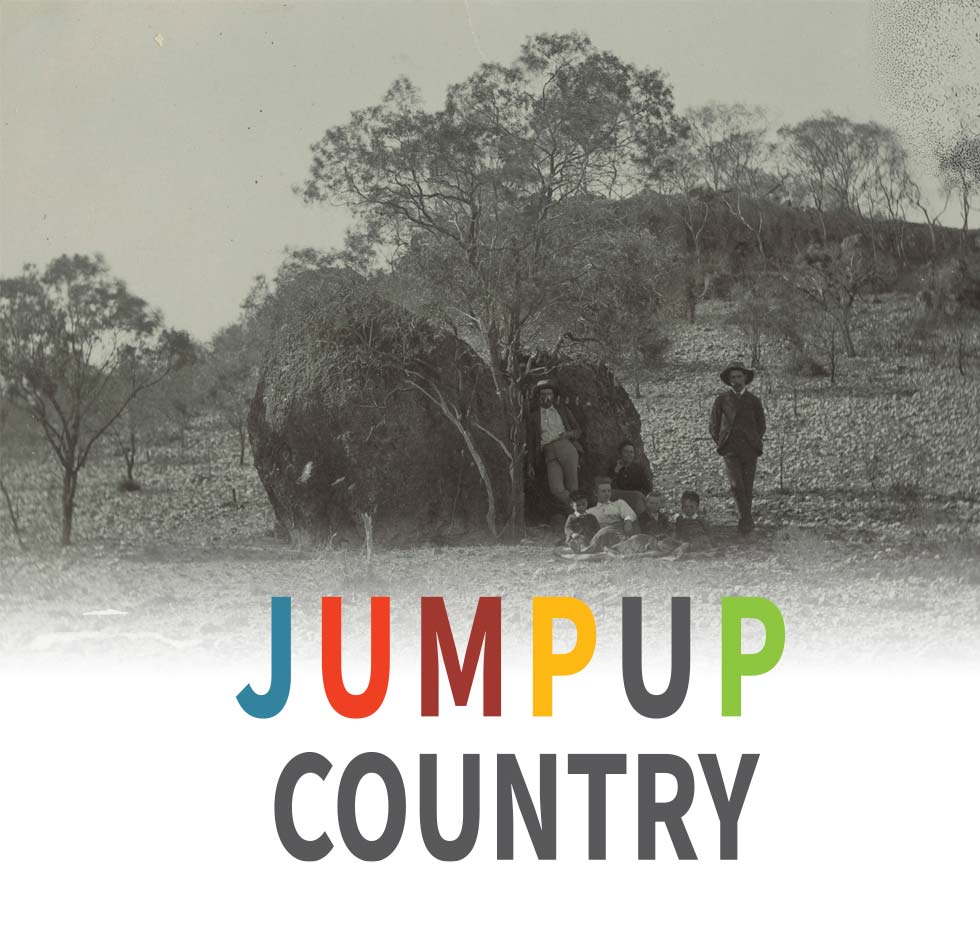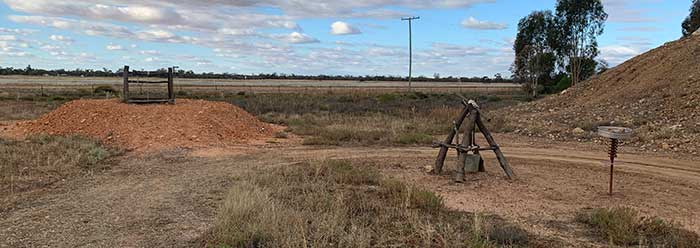... gateway to the west
Its easy to travel through the jumpup country and miss its significance if you're not watching out for the landmarks along the way.
This ground is the watershed between the Warrego and Paroo Rivers. To the east across the Warrego catchment lies the soft red soils and blacksoil plains. Look west into the Paroo though it is hard stoney country as far as the eye can imagine. Truly the outback starts here.
But why is this so? What is it about this country that makes it such a dividing line in the landscape?
As with all such puzzles, the answer lies in the ground under your feet and the soils you walk upon. Fortunately to help us appreciate this we have a wonderful geological diagram that was included in a map of Queensland's artesian bores in the 1890s.
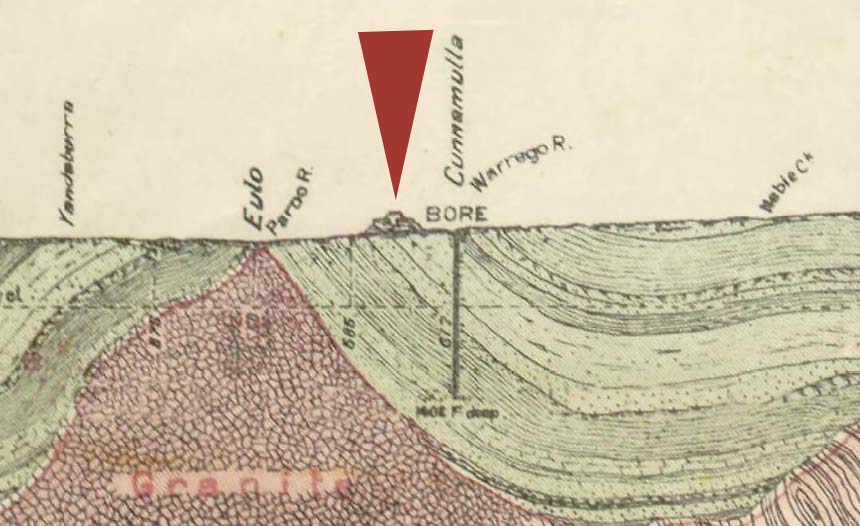
This shows how the ancient granite bedrock that provides the footing for the more recent sedimentary rocks sweeps up along a fault line to outcrop around Eulo.
This helps explain why the Paroo is such a hotspot for phenomena like artesian springs and treasures like opals. In this landscape, the jumpup country is such a feature that it even made it onto the map transect diagram where it stands as the dividing line between east and west.
The location of the jumpup feature on top of sedimentary rocks reflects how many parts of the surface sandstones and more recent sands have been formed into a tough fine-grained quartzite over the past 50 million years. These rocks often contain plant fossil remains indicating much wetter environments than occur at present. Silcrete pebbles and boulders sit on top of the landscape as gibbers and massive silcrete often forms the low cliff lines on tableland edges.
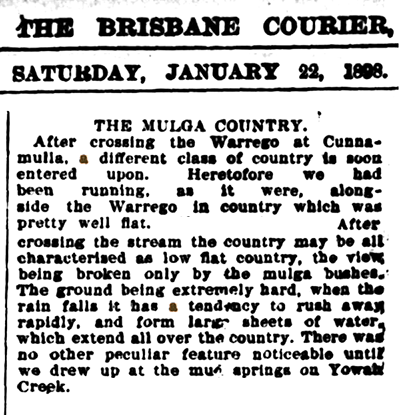
Another interesting effect of the change in soil types associated with the jumpup country was commented upon by a traveller here in 1898. He noted that once one crossed over into the Paroo River catchment:
The ground being extremely hard, when the rain falls it has a tendency to ush away rapidly and form large sheets of water that extend all over the country.
The effect of this can be seen in this image from the 1890s of the Paroo River in flood. Here the mail coach is seen at Eulo being winched across the river with the horses swimming beside.
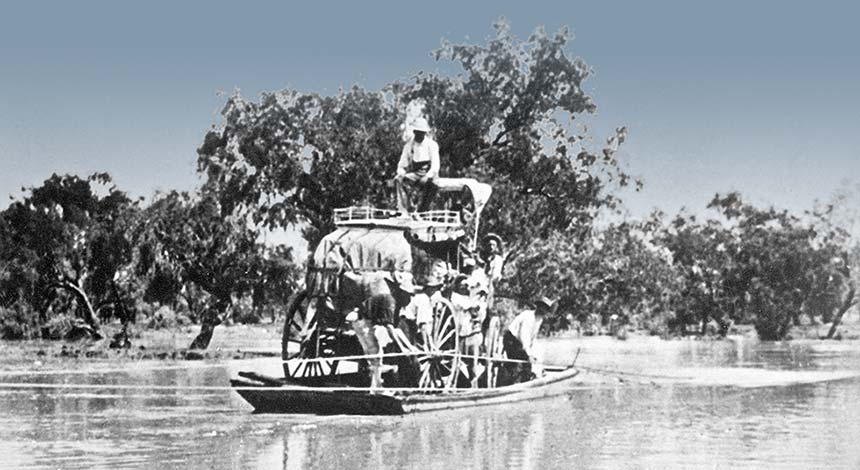
Opal mining in the Paroo
The first mention we find of someone coming across opals in Paroo country comes from a letter to the Australian newspaper on 1 March 1873 asking if anyone knew anything about opals? – cause there may be some up here in the Warrego District.
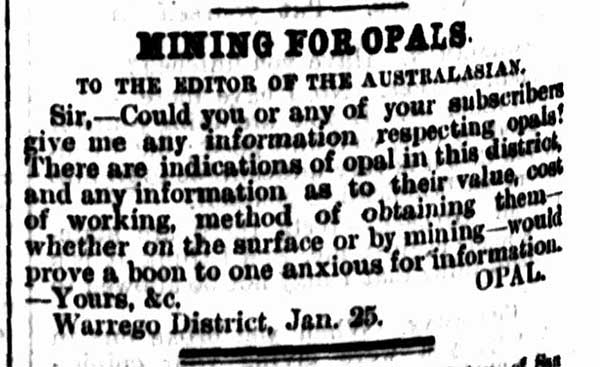
And indeed - opal was there to be had on the Paroo. Two years later E. M. Geary – the owner of several Paroo holdings – was seen sporting an opal found on his property that was “as fine a specimen as we have ever seen.”
The next time opal was publicly associated with the Paroo came in 1883, when the NSW Linnean Society monthly meeting reported viewing a:
“specimen of opal in reniform nodules, obtained by Mr Gilliatt from a well in the Paroo District. The matrix is understood to have been clay, presumably a deposit from the hot springs.”
We get some insight today of opal mining in the Paroo from an account of opal mining in western Queensland by a Mr J. Hickie published in The Capricornian newspaper on 10 Oct 1896. He noted that:
I have been pretty well all over the opal fields starting from Eulo and Thargomindah. At the time of my visit to the south, that part of the country was suffering from drought of a very severe kind, so that grass and waler were very scarce indeed, so scarce that most of the claims had to be abandoned for want of water for miners’ horses as well as the miners themselves.
At the time of my visit to Eulo I was informed that there were only two men working at the Yowah mine, the one floated some years since in the English market by Mr. Herbert Bond. ...
Amongst, the miners [across all the fields visited for the report] I found many old opal-getters, old men won had never followed any other occupation for years, but they were very few indeed. The great majority of them are recruited from the ranks of the shearers, who turn to opal mining in the off season, and sometimes make it pay handsomely.
The extent of opal mining in the Paroo country by the early 1900s can be gauged from this detail of a geological sketch map of Queensland published in 1905.
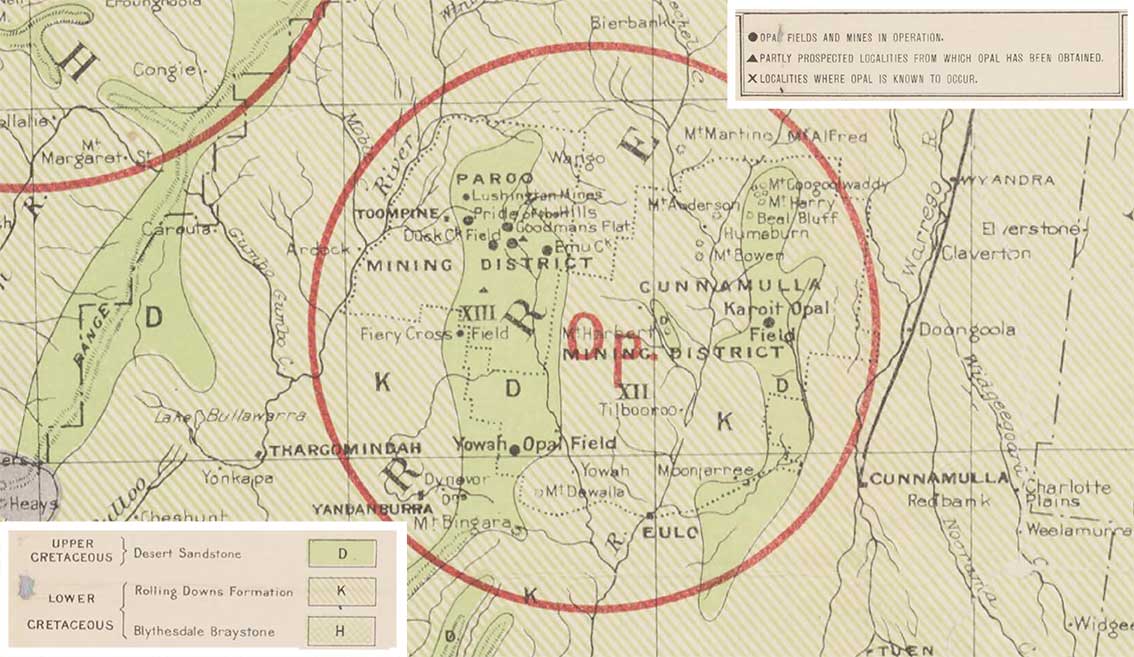
A feature of the opal mining process was that as the opals were found close to the surface, it was a relatively simple process to mine for them. This is reflected in the pit head re-created here at the Cunnamulla Bushlands today.
The actual mining process was described in the Hickie article where he noted that:
The opal is found in two formations boulder and sandstone. The boulder is an ironstone formation, for the most part completely surrounding the precious gem. They are just like a reef, and can be followed up for some distance. The sandstone or band formation sometimes outcrops on the surface, and some very valuable opals indeed have been found within six inches of the surface, but sometimes the sinking is as much as thirty feet, after the manner of sinking for alluvial gold. The shaft is said to be bottomed when the 'clay' is met, after which further winking is useless, bnt in many instances inexperienced miners don't know when they come to the clay, though this knowledge is soon acquired on an opal field by anyone anxious to know for himself.



